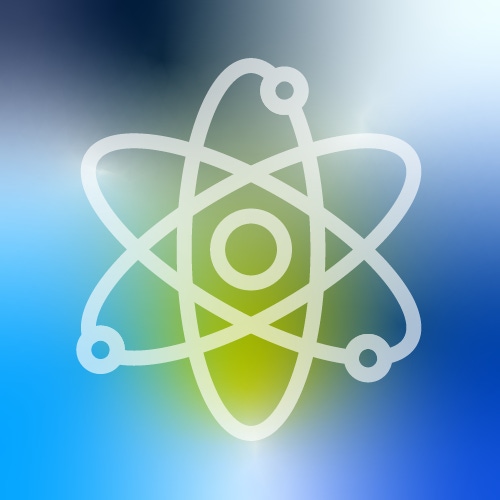Blue Planet's R&D push bears 5G fruit
The automation unit of Ciena is touting its support for 5G network slicing and backing a new multicloud initiative.

COPENHAGEN – Digital Transformation World – Blue Planet escaped much analyst attention at the start of the month, when parent company Ciena reported numbers for its fiscal third quarter.
So preoccupied were the financial sages with Ciena's component shortages that no one bothered to ask about its little software division, responsible for only about 2% of company sales.
Small as it is, Blue Planet was a shining star of the business last year, growing sales by 23%, to $77.2 million, when Ciena's were up just 2.5%. But this year has been less munificent.
A scour of the latest quarterly filing with the US Securities and Exchange Commission (SEC) shows that Blue Planet's revenues are down 3.8% year-on-year for the first nine months, to about $55.3 million. Even worse was the $17.7 million loss for the same period, compared with a small $11,000 profit a year earlier.
"We've experienced some ebbs and flows with Blue Planet this year, resulting in lower-than-expected revenue in FY22, but orders are strong," said Jamie Moody, Ciena's director of corporate communications and global public relations, via email.
Profitability suffered partly because of higher research and development costs, according to Ciena's SEC filing. But the effort is now bearing fruit in updates to the product portfolio and new initiatives, unveiled at this week's Digital Transformation World event in Copenhagen.
Heading the list are a set of 5G automation tools aimed at the standalone variant of the technology, including support for network slicing.
"We have a well-defined set of products that of course can work together but are also open to multivendor standards-based use," Kevin Wade, Blue Planet's product marketing team leader, told Light Reading.
While owned by Ciena, Blue Planet has long insisted it is compatible with any third-party products – as long, presumably, as other vendors are similarly inclined.
The best thing since…
How the market reacts will probably depend on the appetite for network slicing and the pace of the industry's transition to standalone 5G.
Progress toward the technology – which gives operators a new core network to use alongside the New Radio standard already in widespread commercial deployment – has been much slower than many analysts had expected.
The difficulty of migrating to cloud-native systems, spectrum-related constraints and a lack of compatible devices are typically cited as the big challenges.
There is also disagreement on whether network slicing really is the best thing since Otto Rohwedder took kitchen sawing out of sandwich preparation and upset bread knife makers everywhere.
A ballyhooed feature of standalone 5G, it would allow operators to reserve network features for specific categories of services, user groups or distinct customers. Some critics say it will be hard to market (customers will demand service level agreements (SLAs), not slices, even if network slices make guaranteeing those SLAs easier).
Others think it unnecessary. It also risks contravening government rules on net neutrality, the principle that all Internet traffic be treated equally.
Yet Blue Planet says it has already signed up a Tier 1 operator and is in trials with other service providers. On the granularity of the slices it can support, there are no significant limitations, says Kailem Anderson, Blue Planet's vice president of portfolio and engineering.
"Most carriers will create a slice per customer, but we are also seeing movement toward vertical slicing, where you might create an IoT-based slice or a gaming slice with a certain set of attributes," he told Light Reading.
Entering the multicloud space
Blue Planet is also swinging behind a relatively new open-source initiative called Nephio. Backed by Google, it is designed to help operators manage resources across multiple different clouds.
"Our platform is cloud-native and can even be consumed as SaaS [software-as-a-service]," said Wade.
"The enhancements we've made are about shifting to Kubernetes and enabling this streamlined and standards-based approach to supporting cloud-native functions across this multicloud environment."
While open-source projects in the telecom industry have had mixed fortunes, the Blue Planet executives are optimistic Nephio will thrive.
That's partly because it is based on Kubernetes, which has already become the de facto standard for managing containers, but also because Nephio is targeting a specific issue.
Want to know more about 5G? Check out our dedicated 5G content channel here on Light Reading.
"We see a lot of open-source initiatives come and go in the telco space," said Anderson.
"We are more encouraged with the likes of Nephio because it is solving a particular problem. It is not boiling the ocean as it relates to multicloud. There is nothing tangible there with Nephio but we like the concept of there being an open source controller in the market and so we've joined up."
Nephio appears to have attracted support from a range of well-known telco brands, including Telefónica, T-Mobile, Verizon and Vodafone, but it still counts Google as its only public cloud member.
And that will probably need to change if it is to succeed in the long term, Anderson concedes.
"We haven't seen the other two hyperscalers jump into that, at least as of a few weeks ago," he said.
"Up to now, the hyperscalers haven't been motivated to drive a converged strategy and Google is trying to do that. If it builds momentum you want to be a part of it, because if it goes down the same path as Kubernetes it becomes a strategic asset you want to integrate."
Separately, Blue Planet says it is now offering customers what are known as "low code" capabilities, allowing less skilled IT people to create the services that would normally be developed by experienced programmers.
"The overall trend is called low code, no code, which is really an evolution of DevOps and CI/CD [continuous integration/continuous deployment] so that operators can do more themselves. We've continued to make new tools available to them to support that."
Related posts:
— Iain Morris, International Editor, Light Reading
About the Author(s)
You May Also Like












